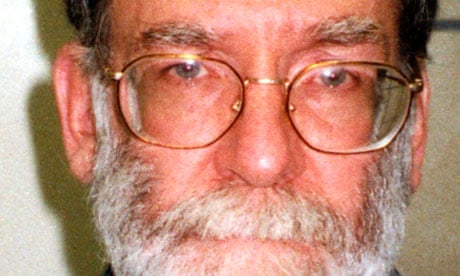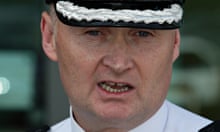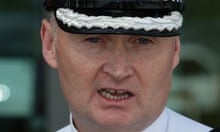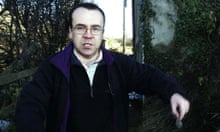Who was Harold Shipman?
Harold Shipman was Britain's most prolific serial killer. According to the public inquiry into his crimes, the former family doctor killed at least 250 of his patients over 23 years. He was found dead in his cell at Wakefield prison on January 13 2004, having hanged himself. The 57-year-old was serving 15 life sentences.
What triggered the inquiry?
Shipman was convicted at Preston crown court in January 2000 of the murder of 15 elderly patients with lethal injections of morphine. A public inquiry was launched in June 2001 to investigate the extent of his crimes, how they went undetected for so long, and what could be done to prevent a repeat of the tragedy.
What do we know about his crimes?
His first victim, Eva Lyons, was killed in March 1975 on the eve of her 71st birthday while Shipman was working at the Abraham Ormerod medical practice in Todmorden. The following year the first clues emerged that Shipman was no ordinary respectable GP. In February 1976, he was convicted of obtaining the morphine-like drug pethidine by forgery and deception to supply his addiction to the drug. Later that year, in the name of a dying patient, he obtained enough morphine to kill 360 people. After receiving psychiatric and drug treatment in York, he re-emerged as a GP in Hyde, Greater Manchester. His method of murder was consistent: a swift injection of diamorphine - pharmaceutical heroin. He killed 71 patients while at the Donnebrook practice in the town and the remainder while a single-handed practitioner at his surgery in Market Street. The majority of his victims - 171 - were women, compared with 44 men. The oldest was 93-year-old Anne Cooper and the youngest 41-year-old Peter Lewis.
How did he get away with it?
When Shipman was fired from the Todmorden medical practice for forging prescriptions, he received a heavy fine but was not struck off by the General Medical Council (GMC), the regulatory body for doctors. Instead, it sent him a stiff warning letter and allowed him to carry on practising. This meant that from this point any employer or patients who asked about Shipman would probably not have been told about his conviction. By the late 1990s, his crime was forgotten and he appeared to be a dedicated, caring professional. But in 1998, Hyde undertakers became suspicious at the number of his patients who were dying, and the neighbouring medical practice discovered that the death rate of Shipman's patients was nearly 10 times higher than their own. They reported their concerns to the local coroner who in turn called in Greater Manchester police. But the police investigation failed to carry out even the most basic checks, including whether Shipman had a criminal record. Nor did they ask the GMC what was on his file. Neither Shipman himself not relatives of the dead patients were contacted. The officers did ask the local health authority to check the records of 19 deceased patients for any inconsistencies between the medical notes and the cause of death on the death certificate. But the medical adviser was unaware that the doctor he was investigating had a history of forging documents - and Shipman had added false illnesses to his victims' records to cover his tracks. As a result the investigation found no cause for concern and the GP was free to kill three more of his patients before finally being arrested in February 1999.
What led to his conviction?
Shipman's crimes were finally uncovered after he forged the will of one of his victims, Kathleen Grundy, leaving him everything. Having administered a lethal dose of morphine to the 81-year-old former mayoress on June 24 1998, he ticked the cremation box on the will form. But she was buried. Her daughter, Angela Woodruff, was alerted about the will by Hyde solicitors Hamilton Ward. She immediately suspected foul play and went to the police. Mrs Grundy's body was exhumed on August 1 1998 and morphine was found in her muscle tissues. Shipman was arrested on September 7 1998. The bodies of another 11 victims were exhumed over the next two months. Meanwhile a police expert checked Shipman's surgery computer and found that he had made false entries to support the causes of death he gave on his victims' death certificates.
Why did he kill his patients?
Various theories have been put forward to explain why Shipman turned to murder. Some suggest that he was avenging the death of his mother, who died when he was 17. The more charitable view is that he injected old ladies with morphine as a way of easing the burdens on the NHS. Others suggest that he simply could not resist playing God, proving that he could take life as well as save it.
What is the scope of the inquiry?
The inquiry, chaired by Dame Janet Smith, was split into two parts. The report of the first part examined the individual deaths of Shipman's patients. The second part is examining the systems in place that failed to identify his crimes during the course of his medical career.The inquiry team is also carrying out a separate investigation into all deaths certified by Shipman during his time as a junior doctor at Pontefract General infirmary, West Yorkshire, between 1970 and 1974. A separate investigation by the prisons and probation ombudsman, Stephen Shaw, concluded that Shipman's death "could not have been predicted or prevented".
What are its findings?
The inquiry has published six reports. The first concluded that Shipman killed at least 215 patients. The second found that his last three victims could have been saved if the police had investigated other patients' deaths properly. The third report found that by issuing death certificates stating natural causes, the serial killer was able to evade investigation by coroners. The fourth report called for stringent controls on the use and stockpiling of controlled drugs such as diamorphine.
The fifth report on the regulation and monitoring of GPs criticised the General Medical Council (GMC) for failing in its primary task of looking after patients because it was too involved in protecting doctors. The sixth and final report, published in January 2005, concluded that Shipman had killed 250 patients and may have begun his murderous career at the age of 25, within a year of finishing his medical training.
Could this happen again?
A range of measures is being considered to improve checks on doctors. The government is considering piloting schemes to monitor GPs' patient death rates. These might include recording causes of death, each patient's age and sex, the time of death and whether other people were present. The fourth report called for stringent controls on the use and stockpiling of controlled drugs such as diamorphine. The fifth report recommends an overhaul of the GMC's constitution to ensure it is more focused on protecting patients than doctors. It proposes that the body is no longer dominated by its elected medical members and should be directly accountable to parliament.





